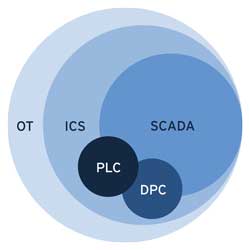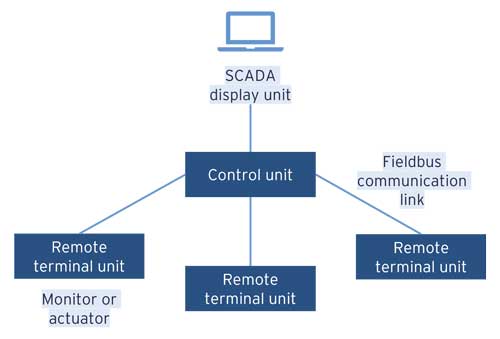Operational Technology (OT) refers to computing systems that are used to manage industrial operations as opposed to administrative operations. Operational systems include production line management, mining operations control, oil & gas monitoring etc.

Industrial control systems (ICS) is a major segment within the operational technology sector. It comprises systems that are used to monitor and control industrial processes. This could be mine site conveyor belts, oil refinery cracking towers, power consumption on electricity grids or alarms from building information systems. ICSs are typically mission-critical applications with a high-availability requirement.
Most ICSs fall into either a continuous process control system, typically managed via programmable logic controllers (PLCs), or discrete process control systems (DPC), that might use a PLC or some other batch process control device.
Industrial control systems (ICS) are often managed via a Supervisory Control and Data Acquisition (SCADA) systems that provides a graphical user interface for operators to easily observe the status of a system, receive any alarms indicating out-of-band operation, or to enter system adjustments to manage the process under control.
Supervisory Control and Data Acquisition (SCADA) systems display the process under control and provide access to control functions. A typical configuration is shown in Figure 1 - Typical SCADA Configuration Figure 1.

The main components are:
- SCADA display unit that shows the process under management in a graphic display with status messages and alarms shown at the appropriate place on the screen. Operators can typically use the SCADA system to enter controls to modify the operation in real-time. For instance, there might be a control to turn a valve off, or turn a thermostat down.
- Control Unit that attaches the remote terminal units to the SCADA system. The Control unit must pass data to and from the SCADA system in real-time with low latency.
- Remote terminal units (RTUs) are positioned close to the process being managed or monitored and are used to connect one or more devices (monitors or actuators) to the control unit, a PLC can fulfil this requirement. RTUs may be in the next room or hundreds of kilometres away.
- Communication links can be Ethernet for a production system, a WAN link over the Internet or private radio for a distributed operation or a telemetry link for equipment in a remote area without communications facilities.
There are some seminal changes happening in the OT world at the moment. Organisations want to leverage their OT assets for business purposes, they want to be agile and have the ability to make modifications to their OT configurations. They want to take advantage of new, cheaper, IP sensors and actuators. They want to leverage their corporate identity provider service to authenticate operational personnel. It’s an exciting time for operational technology systems.











































